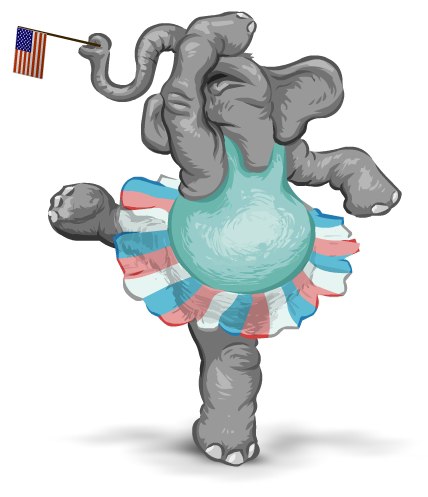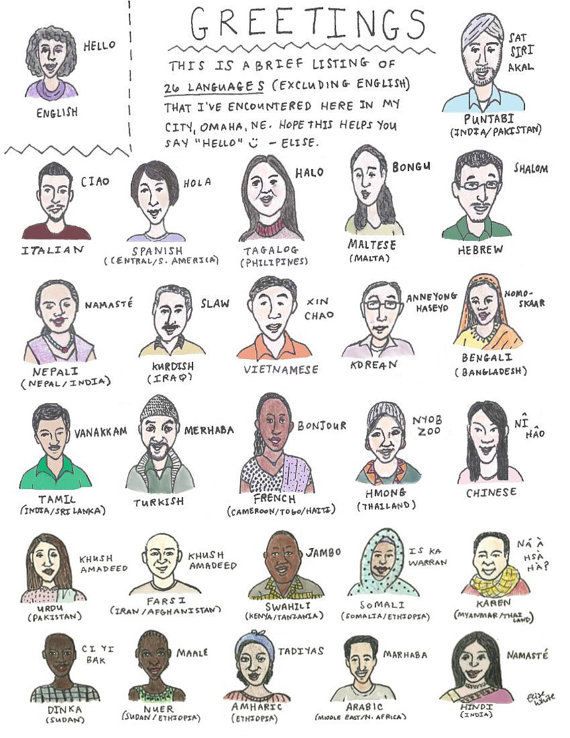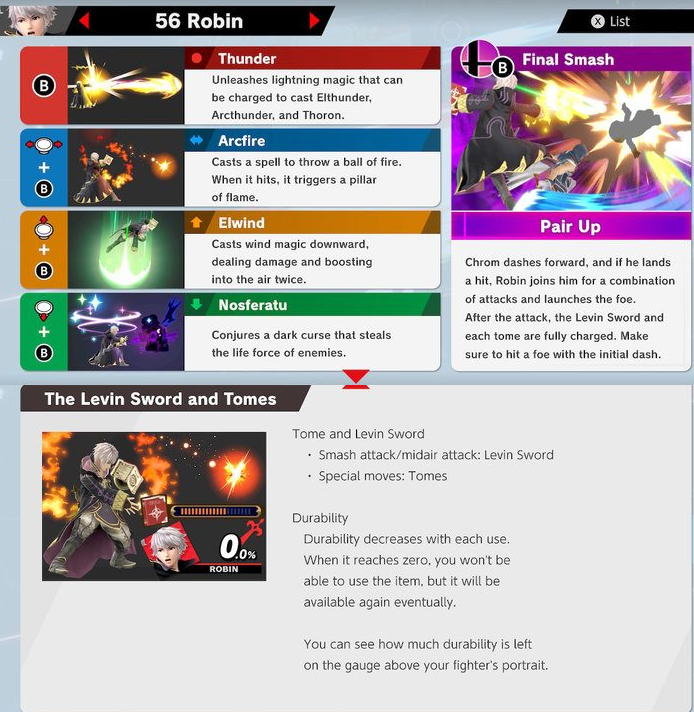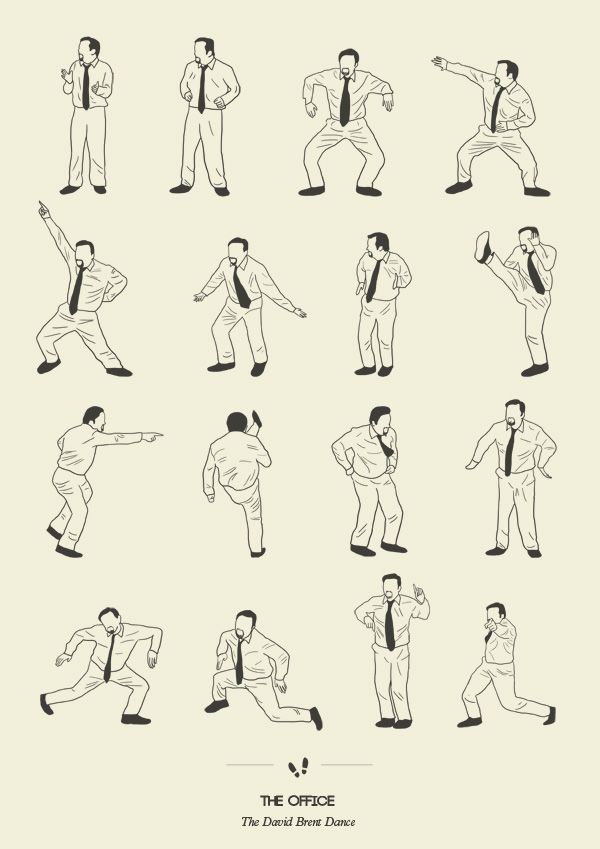How to make elephant dance
How to make an elephant dance? Some thoughts about fostering change in big corporations today
“We will have change agents? Wow! That sounds thrilling! But what are they? Only thing I know, they have been established directly by our new CEO to implement a comprehensive program to improve our culture: they call it a Change Management program! Isnt´t that exciting?”
It was in the early 90ies during my first townhall meeting ever when I first came across the change topic: when a new CEO had joined Siemens Nixdorf AG, a once famous global computer manufacturer but which at that point in time had been off the track since many years.
The company had seen a lot of re-organisations up to then, but none of them had worked. Both management and employees were frustrated and a lot of hope was put into that change management program, but in the end to no avail.
To be honest since that I have seen a lot of top-down change management programs come and go. But during my now 28 years of career I can only name but one which was successful. And this one took an enormous, enduring amount of efforts.
But how to make an elephant like big corporations dance, so change? And make it dance as quickly as possible?
In this digital world there´s no time to be wasted for change management programs like we knew them from the past.
But what to do then?
No “program” but grains and grassroots
In the past, the programs were distinctive, comprehensive and mostly meticously planned. But still, there were a lot of areas in the company where neither any word about the program had been heard of nor any activities had been undertaken to change the culture. Mostly, both change agents, management team and employees either did not have any extra time to spare and/or saw no sense in the program, because they found the measures to be taken simply inappropriate.
Today, once there is a clear business strategy set-out by the management and employees have been legitimated e. g. to accept ownership or act as an entrepreneur, you will see many grassroot initiatives suddenly appear, grow and flourish - stemming from a latent, intrinsic motivation to act and change. And the more there will be the bigger the outreach will be. And this is where the elephant starts to dance.
g. to accept ownership or act as an entrepreneur, you will see many grassroot initiatives suddenly appear, grow and flourish - stemming from a latent, intrinsic motivation to act and change. And the more there will be the bigger the outreach will be. And this is where the elephant starts to dance.
Let the network do the job, says well acknowledge Dion Hinchcliffe
Self-organization - more dancing steps
So, does it still make sense to centrally set-up well-planned, most comprehensive measures for change?
I tend to doubt it.
If people know where the train of change will be going to, so if the goal will have been set, then they should be allowed to decide about how to get there. The reason is simple: as they know where it hurts in their work environment they mostly have already considered how to overcome this. Just like the saying goes: Many ways lead to Rome. So employees should be allowed to choose whatever they deem appropriate to foster culture change.
This will also help to meet the exponentially increasing pace at what change is coming towards us and requires us to adapt – centralized processes are doomed to failure here.
Volunteers win over top-down assignments - the advanced dancer
In many cases these self-organized change initiatives will have some people in a voluntary driver seat. That´s what in former times we called Change Agent. We may still do so today, but compared to the past it is now about acting voluntarily as a Change Agent.
In the past one was assigned by one´s boss to become a Change Agent – it was always on top of the job.
Well, how much enthusiasm is to be expected from someone who´s made to do something?
But successful, which is sustainable, change relies on the enthusiasm of those who bring the change about, foster and coach it. Change is an emotional thing. If you yourself don´t burn a least a little bit for it, how can you enlighten the fire in someone else´s heart?
Therefore, I would like to suggest that change agents should be volunteers (see above the grains or grassroot thing).
However, to make change really happen, they should be willing to dedicate a certain amount of their daily business hours to foster change. And they should commit to actively fostering change by doing.
Make change a habit
In the past change management programs or initiatives were limited time-wise.
But to change sustainably you need time: to practice e.g. new ways of working or leadership on and on again until they´ve become a habit. Coaches are needed all along that road and it´s one without ending.
That´s what you´ll also constantly will need change agents for. Especially when the world around you keeps on changing in an ever increasing speed.
The network is the ultimate key - expert dancing
From what I see I tend to say that in the end it will be tremendously helpful if the major grassroot initiatives are networked among each other. So that then, change agents – so those in the driver seats of the initiatives can align, share wherever feasible and sensible. And they can build up relationships among the initiatives, which is the true essence of networks and also – from my perspective – of successful change “initiatives”.
And they can build up relationships among the initiatives, which is the true essence of networks and also – from my perspective – of successful change “initiatives”.
And in the end this can ensure that all grassroot initiatives are pulling the same string in terms of supporting the change and the underlying business strategy.
Networked initiatives will then fit together like pieces in a puzzle - this will also help employees to reduce complexity, to make sense and to actively join – since a new initiative will not be looked at as another superfluous bandwaggon .
My credits go to:
- DionHinchcliffe and his article "Using Online Community for Digital Transformation",
- JohnStepper for his blog post "The HR director I wish I knew" and
- my dear colleague SabineKluge with her great article "Reinventing Siemens - Tanzstunde für Elefanten" (ich hoffe, Du bist mir nicht böse, dass ich Deinen genialen Begriff Tanzstunde für Elefanten wiederverwertet habe).
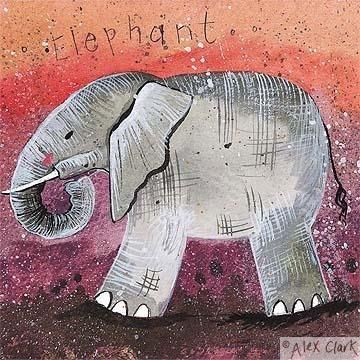
All of you inspired me greatly to ponder about how to foster change today and put my thoughts into the article above.
Make the Elephant Dance
The Digital Leader Newsletter — Strategies and Techniques for Change Agents, Strategists, and InnovatorsIt isn’t a question of whether elephants can prevail over ants. It’s a question of whether a particular elephant can dance. If it can, the ants must leave the dance floor.—Louis V. Gerstner, Jr.
How does a company the size of Amazon consistently innovate? How do you get an elephant to dance? If you study Amazon, you’ll realize that there are a few tricks and approaches that can help a big company, an elephant, create the movement to innovate.
The most important decisions executive management makes is where to put its resources. The essence of strategy is deciding what to say “yes” to and what to say “no” to. As in any investment portfolio, there are likely low-risk, low-reward investments, and higher-risk, higher-reward investments. Here are a few tips.
Here are a few tips.
Many companies squash innovation and invention because they want predictable results—a predictable time frame, predictable investment, predictable financial returns with moderate risk. This is similar to how a private equity company invests. There are times when this is the right mentality.
For example, you should understand the returns and risks when improving and automating an internal process, building a new distribution center, or implementing a marketing system. These should have a clear business case and understanding as to what is needed for success to happen and business value to be created. But when you’re creating new, innovative customer features or developing new business lines, your investments, risks, and returns will be harder to predict. In this case, the job of a successful innovator is to think and act like a venture capital firm by having many smaller bets organized around a thesis, but realizing that these have a much different risk profile and low predictability.
Share
Leave a comment
The key is maintaining a balanced investment portfolio and understanding the differences among its segments. High-risk investments need to be small experiments to prove key aspects before scaling. “Think big, but act small” should be the motto for this high-risk, high-reward part of your portfolio.
A Desired Digital Project Portfolio
To create significant departure and disruption from current business practices, the teams within your company that are dedicated to creating innovation need to be separated from the teams representing the status quo. Having a full-time focus on creating new ventures is critical to success.
Having a full-time focus on creating new ventures is critical to success.
While physical separation can be important, it’s more about independence from the legacy business and having unfiltered communication and collaboration with a company’s CEO or senior leaders. The separation can be physical or just organizational. Remember how difficult it is to ask a team or senior leader to both run a business and create something new. Nearly impossible. The existing business typically always wins in the moments of truth regarding where time, attention, and obsession are invested.
At many companies, you can identify a leader’s cachet by the headcount and expense budget he or she manages. Not so at Amazon, where senior people are often dedicated to leading new big bets. This has a unique and clever name – a single-threaded leader. This leader “obsesses” about driving the initiative to succeed. They need to be senior enough to have reach and influence in the organization and know-how to get things done. But what typically happens at companies -- senior leaders are not “single-threaded” and the “big bet” is just one objective on their list, and typically is not the most important priority.
But what typically happens at companies -- senior leaders are not “single-threaded” and the “big bet” is just one objective on their list, and typically is not the most important priority.
Hint: They’re not typically about profit. Long before a new project launched at Amazon, the team behind it would outline its goals—whether growth, operational performance, customer experience, or costs—and create a set of metrics to measure those goals over time.
The idea was that if the goals and metrics were right, the team could succeed with more independence and less governance. That independence would also lead to more creativity, as team members found new ways to meet those goals.
Amazon has two rules of thumb for building teams that think and act innovatively. The first is to create a team composed of people with a variety of disciplines and backgrounds. Unique ideas and the ability to execute on them usually stem from teams that can think broadly.
The second rule of thumb is to focus on small teams. Amazon often quantifies this as a “Two-Pizza Team.” In other words, you should be able to feed your whole team with two pizzas. That means no more than 8 to 10 people. Two-Pizza Teams not only own a capability, but they’re also responsible for everything from the market definition and product road map to product development and operations.
Amazon often quantifies this as a “Two-Pizza Team.” In other words, you should be able to feed your whole team with two pizzas. That means no more than 8 to 10 people. Two-Pizza Teams not only own a capability, but they’re also responsible for everything from the market definition and product road map to product development and operations.
In the end, the above ingredients cannot yield a merely good product or service. To win new business, to create passionate and loyal customers, to be interesting, your new product or service must be insanely good. It must be much better than existing options. Like jaws-to-the-floor better. This is not about marginal improvement. This is not a “completely new, but still average” product. Successful innovation results in an incredible experience—at the right price point. It surprises users, and it very quickly becomes indispensable to your customers.
• • • • • •
Those are a few ideas to help get the big animal moving.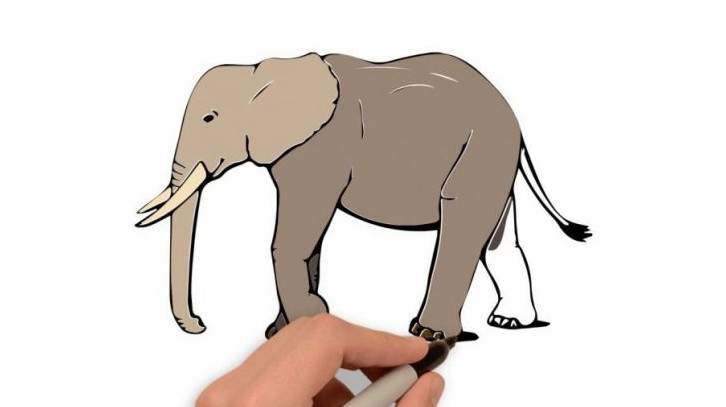 The success of the strategies depends on strong leadership— the right approaches enabled by weak leadership will fail. Leaders must be deeply involved, have great instincts, and be willing to stick with it when the going is difficult.
The success of the strategies depends on strong leadership— the right approaches enabled by weak leadership will fail. Leaders must be deeply involved, have great instincts, and be willing to stick with it when the going is difficult.
If you’d like to connect on your innovation or digital transformation agenda, let’s discuss. Just click the image or link to schedule time with me.
https://calendly.com/rossmanpartners/15min
Onward!
John
About The Digital Leader Newsletter
This is a newsletter for change agents, strategists, and innovators. The Digital Leader Newsletter is a weekly coaching session focusing on customer-centricity, innovation, and strategy. We deliver practical theory, examples, tools, and techniques to help you build better strategies, better plans, better solutions — but most of all, to think and communicate better.
Share The Digital Leader Newsletter -- By John Rossman
Leave a comment
How to make an elephant dance, or what can an expat from Cirque du Soleil teach a Russian startup?
The rapidly developing Russian market is of increasing interest to the world community. Investors find investment opportunities here, and for professionals, Russia is one of the most promising and exciting places to work, especially when it comes to developing start-ups.
Daria Batukhtina especially for E-xecutive. ru talked to Vladimir Vervelsky , an expat who left the USSR at the age of ten and lived most of his life in Canada, held a management position at Cirque du Soleil and now works at Heverest , an e-commerce startup, an online lifestyle retailer. What was the reason for returning to Russia? How did the project attract a professional of this level? And what growth is expected for the sporting goods market in Russia in the coming years?
ru talked to Vladimir Vervelsky , an expat who left the USSR at the age of ten and lived most of his life in Canada, held a management position at Cirque du Soleil and now works at Heverest , an e-commerce startup, an online lifestyle retailer. What was the reason for returning to Russia? How did the project attract a professional of this level? And what growth is expected for the sporting goods market in Russia in the coming years?
Daria Batukhtina : Vladimir, you are an online retailer who worked in the corporate marketing department of Cirque du Soleil. What do circus and e-commerce have in common? Why does a world-famous show need the Internet?
Vladimir Vervelsky: Cirque du Soleil was founded 27 years ago by a Quebec street juggler who wanted to create an unforgettable show for adults and debunk the myth that the circus is entertainment only for children.
Today, the circus Internet is the main sales channel around the world. About 70% of tickets are purchased online. An advanced audience that comes to performances is looking for additional information about the circus and its tours in advance. Therefore, online communications make it possible to predict the demand and number of show participants in a given city, thereby minimizing the risk of show cancellations.
DB: How did the founders of Cirque du Soleil, the creative minds, grasp the importance of the Internet for business?
VV: The circus is a huge innovative machine, not only in terms of creativity, but also technology. With the development of the Internet in North America, the founders of Cirque du Soleil took notice of this opportunity. We can say that they were pioneers and leaders in the development of the web, starting to use it for marketing purposes ten years ago.
For example, in the early days of e-commerce, Cirque du Soleil invested in an online ticketing startup, creating a global platform for promoting the circus. The circus has an online club with over 3 million members worldwide. These subscribers receive performance updates, discounts, and various other benefits. Cirque du Soleil also produces a huge amount of videos and photos with which we are trying to convey those unforgettable emotions that reign at the performances. It's difficult, but you can ... convey the feeling of a miracle.
The circus has an online club with over 3 million members worldwide. These subscribers receive performance updates, discounts, and various other benefits. Cirque du Soleil also produces a huge amount of videos and photos with which we are trying to convey those unforgettable emotions that reign at the performances. It's difficult, but you can ... convey the feeling of a miracle.
The strategy for the development and promotion of the circus through the Internet is constantly updated, taking into account emerging new interactive formats of interaction with the audience. What I noticed for myself while working at Cirque du Soleil is that the marketing team is not afraid to try, to experiment.
DB: What is the Internet marketing strategy of the circus, in a nutshell?
VV: Cirque du Soleil regularly hosts 26-27 shows: theatrical, big top or circus. About 11 of them are stationary, which means they take place only in America or Canada, while others tour around the world. Therefore, the only true marketing solution here is: think globally, act locally.
Therefore, the only true marketing solution here is: think globally, act locally.
The brand is promoted globally by the corporate marketing communications team and supported in cities by the tour and stationary show teams.
DB: Tell us about the Cirque du Soleil team, what is it like?
VV: This is a huge organism living with the emotions of organized performances, so it was a pleasure for me to work with such a team. Thousands of resumes from all over the world come to Cirque du Soleil every day, but few get the chance. In total, about 5 thousand people work in the circus, 3.5 thousand of them are in Montreal.
DB: You said that working in a circus is like working in a start-up… Is that true?
VV: Yes, there is a drive here and there. Although, I confess, to some extent it was my dream - to get experience in Cirque du Soleil. While living in Montreal, I heard a lot about its creative environment. I came there as an accomplished professional, but every day was a challenge for me, because every day innovations in technology, art, marketing and so on are born in the circus. At the Heverest startup, we now have something similar.
I came there as an accomplished professional, but every day was a challenge for me, because every day innovations in technology, art, marketing and so on are born in the circus. At the Heverest startup, we now have something similar.
DB: What was your personal challenge as a circus professional?
VV: Ensure that the audience coming to the show has a positive brand experience from start to finish. After all, the emotions of the performance begin with entering a keyword in a search engine when a user is looking for the next Cirque du Soleil tour. It is important not to destroy the “expectation of a miracle” with a thoughtless or ordinary online service or inattention to the client after. After all, the product (consumer experience of the interaction of the buyer with the Circus) in terms of marketing begins long before the show itself, and also does not end when the performance is over. Show must go on!
The integrity of the show depends on teamwork, otherwise there will be no miracle. I guess I feel something similar with the Heverest brand, because we don't want to sell products for outdoor activities, but the experience that the client gets from using them. Sneakers, backpacks, tents and the like, all serve one purpose - for a person to get unique emotions and new experiences, and then share them with their friends on social networks and at meetings.
I guess I feel something similar with the Heverest brand, because we don't want to sell products for outdoor activities, but the experience that the client gets from using them. Sneakers, backpacks, tents and the like, all serve one purpose - for a person to get unique emotions and new experiences, and then share them with their friends on social networks and at meetings.
D.B.: What do you remember about your first day at the office Cirque du Soleil?
VV: The first day I came to work, I met a sad clown in the elevator who was rehearsing a number. It was at that moment that I realized that I was working in an unusual place. Firstly, because a sad colleague clown practicing his art in an elevator can only be here. And secondly, because in life we see only the final result, a creative presentation, but not painstaking work on it before that.
D.B.: And what motivates you in your work?
VV: User emotions. Once I developed for myself a certain understanding of work and life: the better I do my job, the better the new day of some user will be.
Once I developed for myself a certain understanding of work and life: the better I do my job, the better the new day of some user will be.
DB: But then it doesn't matter to you what to promote online? After an international circus, you came to the position of marketing director at a local Russian startup in the field of outdoor products - Everest . What is the logic behind this choice?
VV: Yes, it doesn't really matter to me what to promote. But for me it is important that the founder of the project, the leader, motivates. It is important for me to create something impressive. Its small, but the show. In the circus, that person for me was Mario D'amico , my boss. It is very good and interesting to work with him, because with every word he inspires to a feat.
In the case of Heverest, such a call was made to me Anton Permogorov , CEO. He traveled around the world in 80 weeks, is going to conquer Kilimanjaro. And every day of working with him charges no worse than performances in the circus. After all, the director of a startup is not just a boss, but an example, a process driver, he wants to be admired.
And every day of working with him charges no worse than performances in the circus. After all, the director of a startup is not just a boss, but an example, a process driver, he wants to be admired.
I need to make sure that we (Heverest) can deliver what the customer expects. Therefore, Heverest for me is an opportunity to change the world by selling certain products to people that help them in this. The circus show comes and pleases people in only one region, and in the case of Heverest, the goods (our product) can be delivered anywhere, and will allow people to make their lives brighter and healthier.
DB: What is the active lifestyle market in Russia today? What is its growth potential?
VV: The Russian e-commerce market is developing by leaps and bounds, and, as I see it, there will be even more business opportunities here in the next couple of years.
For example, according to the research agency RuMetrika , the turnover of the Russian market of "goods for outdoor activities" in 2011 amounted to about $6-7 billion. According to our estimates, by 2015 it will grow to $12 billion. at the very beginning of development, and Heverest has a great chance to take a serious share in the market, since the brand portfolio of this project is already 2-2.5 times larger than that of all other sports online stores.
According to our estimates, by 2015 it will grow to $12 billion. at the very beginning of development, and Heverest has a great chance to take a serious share in the market, since the brand portfolio of this project is already 2-2.5 times larger than that of all other sports online stores.
The main problem now is that Russian consumers have little confidence in online stores due to the historical peculiarities in the country. People want to buy something, but are afraid to pay with bank cards. I believe that our project will have to overcome this fear with proper communication.
The experience I gained at Cirque du Soleil I plan to apply to building the right relationship between Heverest and its customers. It also has its own platform and opportunities for creating a show! Although much of what works great globally is implemented on the Russian market with difficulty, for example, complex CRM tools due to their high cost. But a little time will pass, and with the development and growth of the Russian market, everything will change.
DB: What do you plan to do next? How long will you stay in Russia, because there are still a lot of nuances that do not allow online business to develop fully, for example, logistics and delivery still determine the success of the project.
VV: This is not only Russia's problem, although here it is more acute. For many years I lived and worked in Canada and saw the same situation: yes, logistics, procurement are a key factor in the development of e-commerce, but different kinds of business models can reduce the risk. In Russia, big players like Ozon.ru finally arrived. You know, in e-commerce, marketing is the head of the company, logistics and purchasing are the arms and legs. One will not grow without the other, so it is important to develop the business evenly as a whole.
As for plans: I like to study Runet, because here everything changes very quickly. You can try and quickly see if it takes off or not. The consumer judges the product quickly. If the show is not enticing, no one buys the “next ticket”. Therefore, I want to stay in Russia and get this work experience.
The consumer judges the product quickly. If the show is not enticing, no one buys the “next ticket”. Therefore, I want to stay in Russia and get this work experience.
The Dancing Elephant: How IBM is changing corporate culture to grow revenue
Vice President of Corporate Culture for one of the world's largest manufacturers and providers of hardware, software, IT services and consulting services IBM knows how to help employees stay focused on company strategies to ultimately increase its performance. Why is the company not afraid to change and how does it motivate employees?
IBM is known for its commitment to change. In 2014, it abandoned its unprofitable semiconductor manufacturing business. Nearly a decade earlier, the company that became famous as a PC manufacturer sold this division to the Chinese Lenovo Group. And at 19In the 1990s, former CEO Lou Gerstner described how he turned an aging titan into a major player in the IT industry in Who Said Elephants Can't Dance?
Now under CEO Arvind Krishna, who took over last April, IBM is trying to reinvent itself by spinning off part of Gerstner's IT infrastructure business (a process that was completed Nov.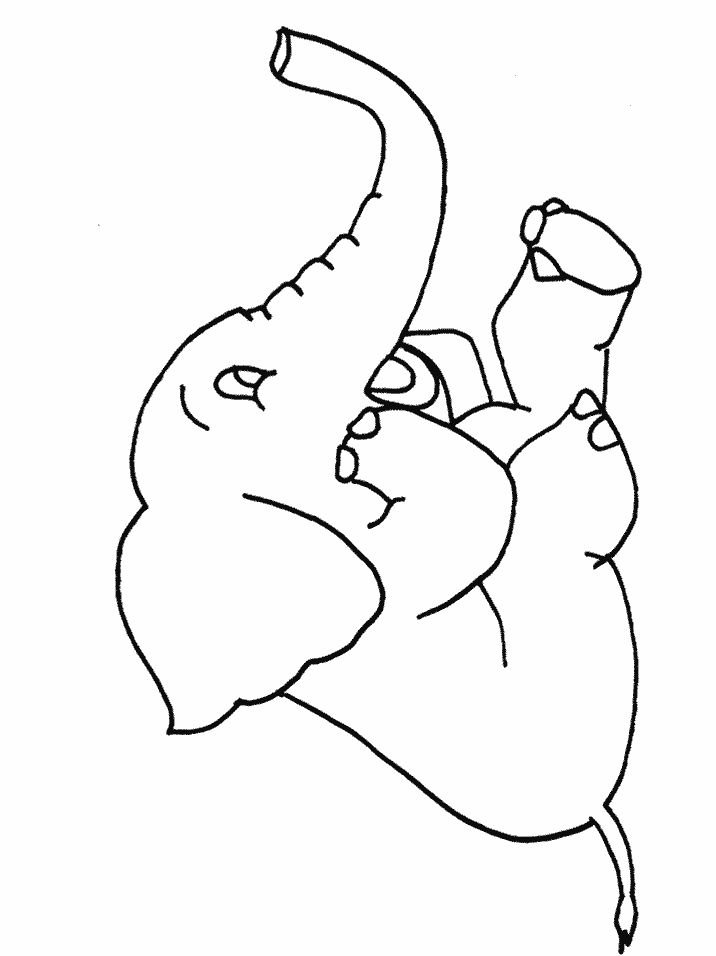 part of IBM). The company's new goal is to focus on cloud computing and artificial intelligence (AI), as well as stem the decline in revenue. IBM shares are underperforming cloud-based competitors like Amazon and Microsoft.
part of IBM). The company's new goal is to focus on cloud computing and artificial intelligence (AI), as well as stem the decline in revenue. IBM shares are underperforming cloud-based competitors like Amazon and Microsoft.
To bring about this transformation and make the elephant dance again, Krishna is counting on the support of Obed Lussen, who took over last year as SVP of Transformation and Corporate Culture. In this new role, Lussen is changing the company's culture and approach to managing people, shifting the focus to skills over degrees, creating certification programs for interviews, and teaching employees to pay attention to the mental health of colleagues.
As Lussen told Forbes, one of the first steps was to host company-wide "jams," or massive online brainstorming sessions that take place on a digital AI-powered idea generation platform. These exercises highlighted four qualities that employees prioritize, including a desire for growth and a focus on inclusion, innovation, and the need for feedback.
Related material
“We're trying to move away from focusing [only] on productivity,” Lussen says. “We want to not only stay efficient, but strive for maximum growth.”
Lussen said that another change was to support complex conversations, not only between supervisors and subordinates, but also between colleagues. According to him, the company needs to move from a culture of approval and recognition to a culture of constructive criticism: “It is important to tell the unpleasant truth so that we can quickly correct course.”
To hire employees whose skills match these cultural changes, the company recently developed a new program that teaches hiring managers to take a more structured approach to interviews rather than just go with the flow, Lussen says. Program participants receive a certificate.
Obed Lussen (IBM Photo) “If you don't have this license, you're not doing HR,” says Lussen. “This is the degree you have earned.”
“This is the degree you have earned.”
IBM has moved to focus more on skills than diplomas and emphasize them. Over the past four years, the proportion of IBM jobs that require a college degree has dropped from 95% to just 50%. Recently, Lussen says, the company has increased the number of internships and hiring of hybrid high school and college graduates to create "springboards" for workers without university degrees.
Related material
Finally, even as companies look for ways to improve employee mental health, the benefits of apps, meditation programs, or psychotherapy are limited. In the absence of outside vendors to serve a company the size of IBM, an internal team of occupational therapists and other physicians developed a mental health allies training program to help employees deal with crises. at colleagues. Employees are not supposed to become psychotherapists, but the training is designed to help them notice possible red flags in their colleagues' behavior and respond with empathy.